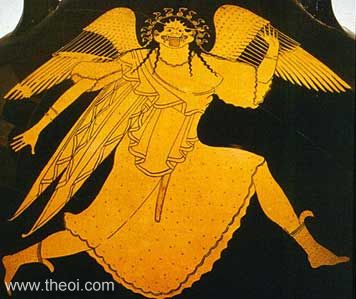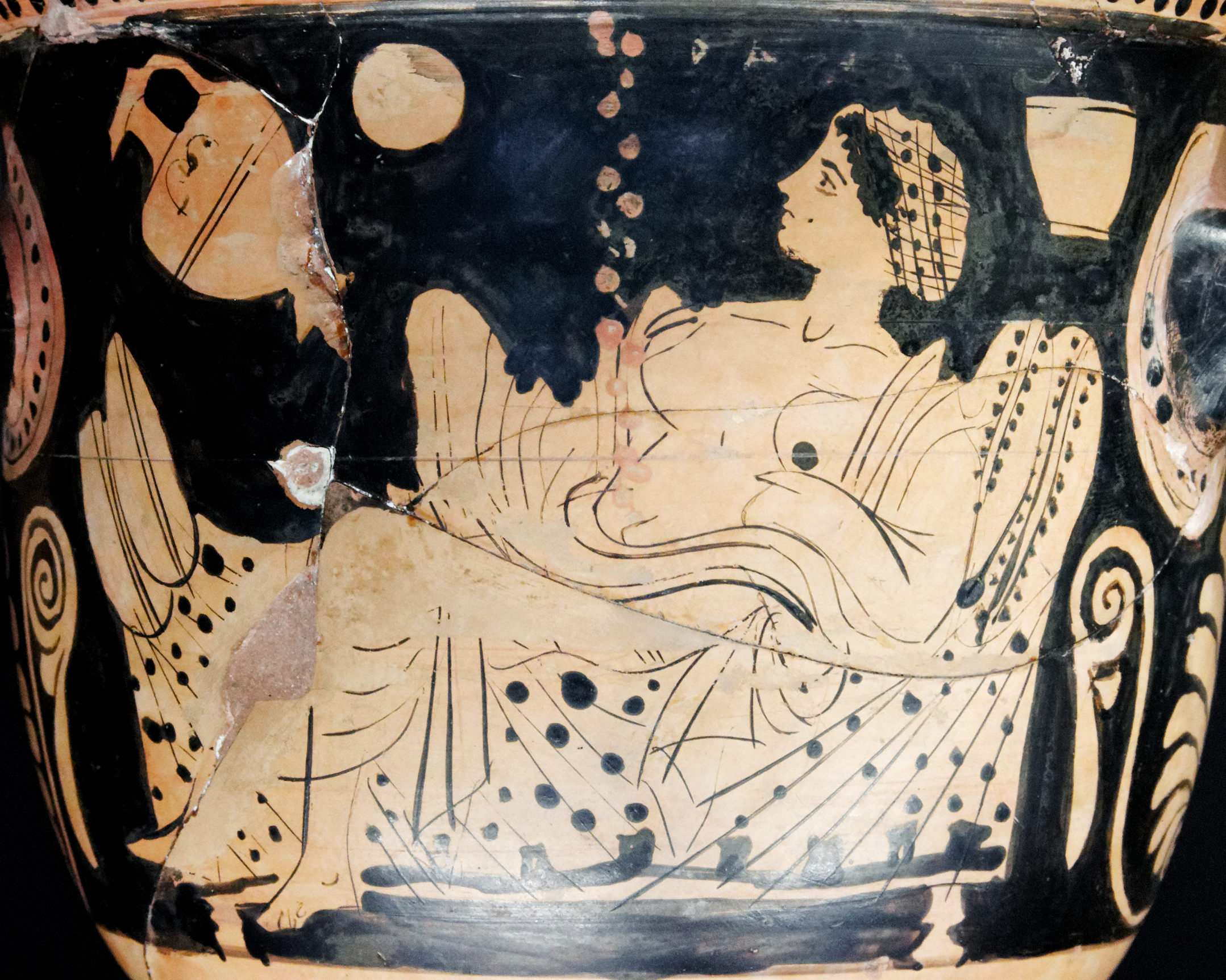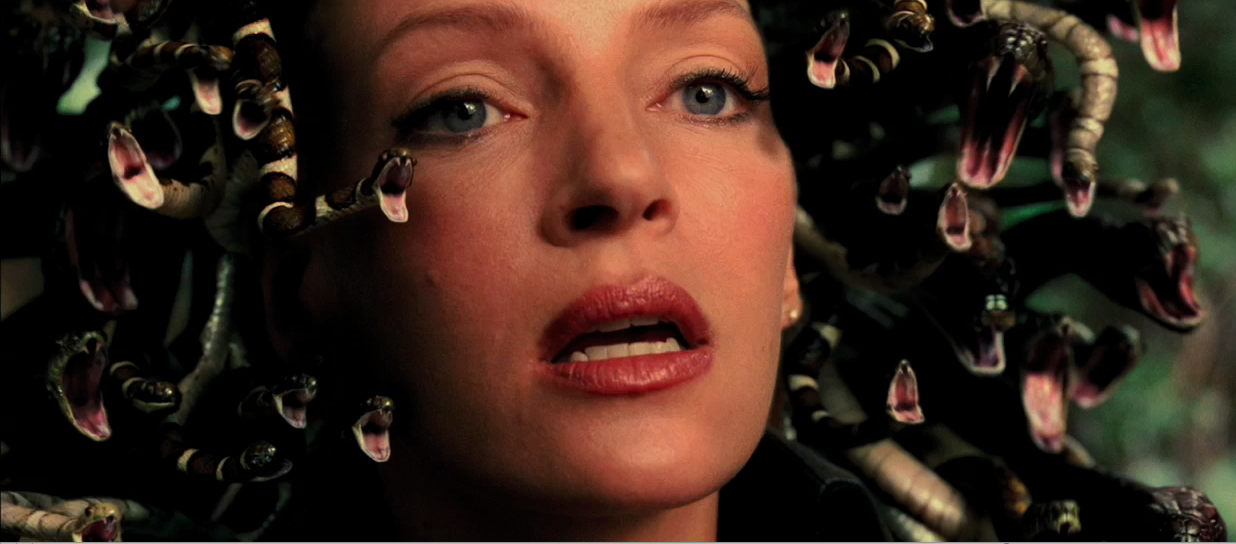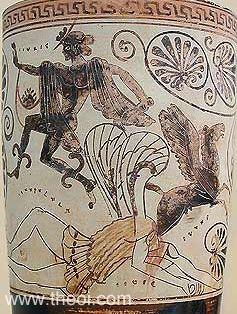Medusa was one of three sisters born to Phorcys and Ceto known as the Gorgons. According to Hesiod's Theogany[1], the Gorgons were the sisters of the Graiai and lived in the utmost place towards the night by the Hesperides beyond Oceanus. Later authors such as Herodotus and Pausanias place the Gorgon's abode in
 |
| Museum Collection: The J Paul Getty Museum, Malibu, California, USA Attic Black Figure Amphora ca 530 BC |
Beyond the Gorgon's birth,
there is little mention of the Gorgons as a group, but Medusa has several myths
about her life and death. The most famous of these myths are concerning her
death and demise. In Hesiod's Theogany[2],
he recounts how Perseus cut off the head of Medusa and from her blood sprang
Chrysaor and Pegasus. Chrysaor being a golden giant and Pegasus the famous
white winged horse. The myth ,according to Pindar[3]
and Apollodorus[4], of
Perseus and Medusa started with a quest.
 |
Perseus, with Athena, slaying the Gorgon
Medusa (c. 560 - 550 bce)
Temple C at Selinus |
 |
| Danaë reclining with Zeus as the shower of gold depicted on a vase 450-425 BC |
 |
Medusa was a formidable foe,
since her hideous appearance was able to render any onlooker into stone.[5] In
some variation of the myth, Medusa was born a monster like her sisters
described as girded with serpents, vibrating tongues, gnashing their teeth[6],
having wings, brazen claws, and enormous teeth[7].
In later myths, mainly Ovid[8],
Medusa was the only Gorgon to possess snake locks, because there were a punishment
from Athena. Accordingly, Ovid relates that the once beautiful mortal was
punished by Athena for having been raped in her temple by Poseidon with a
hideous appearance and loathsome snakes for hair.
 |
| Medusa portrayed by Uma Thurman in the Percy Jackson Film Series |
 |
Ancient Corinthian vase depicting Perseus, Andromeda and Ketos. The inscriptions denoting the depicted persons are written in an archaic form of the Greek alphabet and show some peculiarities such as the left-running direction in ΠΕΡΣΕΥΣ and ΑΝΔΡΟΜΕΔΑ, usage of Epsilon instead of Eta in ΚΕΤΟΣ, the employment of the letter San instead of Sigma in ΠΕΡΣΕΥΣ and ΚΕΤΟΣ and different shapes of the letters such as B for Ε or V for Υ.
Altes Museum, Berlin |
Before his return to his home
of Seriphos, Perseus met the titan Altas who he turned to stone with Medusa's
head after some quarrelsome words[11];
thus creating that the Atlas Mountains of North Africa. Also during the journey
home, Medusa's head spilled some blood on the Earth which formed into Libyan
vipers that killed the Argonaut: Mospos[12].
 |
Perseus showing Atlas the head of Medusa, by Bauer (1703 edition), from the University of Vermont Ovid Project: Metamorphosing the Metamorphoses
|
 |
| Perseus shows the Gorgon's head to Phineus Painting by Luca Giordano. |
 |
| Athena depicted on an Attic red figure amphora from ca. 525 BC |
The Gorgon image appears in several pieces of art and
architectural structures including the pediments of the Temple of Artemis in
Corcya, the cup by Douris, the Gorgon Medusa, and the Medusa mosaic. The Gorgon
became a popular shield design in antiquity along with being an apotropaic (warding
evil) device. The goddess Athena and Zeus were often portrayed with a shield
(or aegis) depicting the head of Gorgon, who is typically believe to be Medusa.
There are several archaeological examples of the Gorgon's face being used on
shields and even breastplates. The most famous example of these would be the
Athena Parenthos from the Acropolis made by Phidias and described by Pausanias[14].
This statue of Athena depicts a Gorgon's face on the goddess' breastplate.
There is, also, Hesiod's description of Herakles shield which describes the
events of Perseus and Medusa.

No comments:
Post a Comment